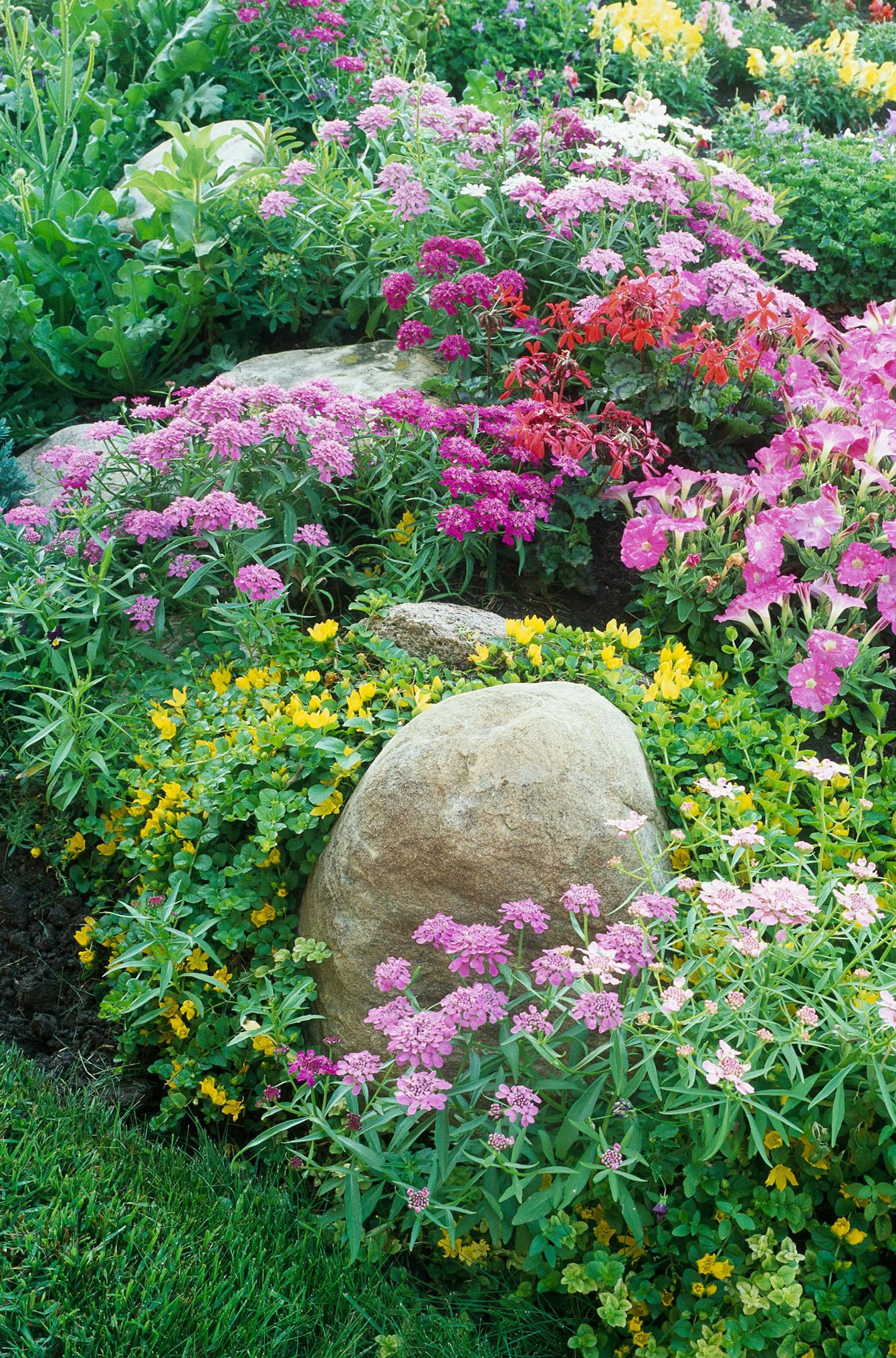While formal gardens are all about order and well-defined spaces, cottage gardens bubble in cheerful tangles of flowers that form a kaleidoscope of hue and texture. According to Darrell Trout, an avid gardener, writer, and lecturer with a passion for the easy-growing beauty of cottage gardens, their style is “relaxed, colorful, and fun.”
Because nature is allowed to take its course more in these spaces, as opposed to the careful manicuring other styles may require, they tend to need less work. “A cottage garden has perhaps less regard for rules than for doing what you really love,” Trout says. You can make cultivating your own corner of delightful floral abundance even easier with the following advice and ideas.
Darrell Trout is an avid gardener, writer, and lecturer who has published several garden planners.
How to Create an Easy Cottage Garden
Cottage gardens are intentionally casual. These tips will help ensure your space is easy to maintain and looks gorgeous every season.
Start a Cottage Garden From Scratch
“Don’t create a monster that you don’t have time to feed regularly,” Trout says. “Keep your cottage garden small and, most of all, fun.” Then, over time, as your confidence grows, increase the size.
Invest in Good Soil
“Starting with good, rich, organic soil where plants will thrive with a minimum of watering and fertilizing cuts the work from the start,” Trout says. He also recommends doing a soil test to learn the type of soil you have. Add organic matter yearly, either by purchasing compost or making your own.
Position Plants Carefully
Much work in a cottage garden design comes from not having the right plant in the right place, either because of the variety’s full size or preferred growing conditions. As you gain gardening experience, Trout says you can push the envelope. “But the healthiest plants—ones that need less care—are those that are in ideal conditions,” he adds.
Select Tough Garden Plants
Trout’s favorites on his cottage garden plants list include spring-flowering bulbs, purple coneflower, wild indigo, ‘Stella d’Oro’ or ‘Happy Returns’ daylily, New England aster, and Russian sage. And roses always lend a romantic touch, but avoid high-maintenance varieties. Instead, Trout suggests growing tough, disease-resistant Knock-Out shrub roses or the old-fashioned climber ‘Blaze.’ For foliage interest, try English cottage garden plants like lady’s mantle, lambs’ ears, or blue fescue.
“Choose high-performance, almost bulletproof plants,” Trout says. “There is no absolutely right way or wrong way to create a cottage garden, so choose what you love.”
Cover Soil
“Mulching helps maintain soil moisture levels and prevents weeds from growing,” Trout says. “As organic mulch (bark, compost, or leaf mold) breaks down, it improves soil. Mulch also gives the garden a neater, more unified look.”
Use Automatic Watering
Trade dragging a hose around for hands-free watering. Trout recommends using drip lines because “it’s easy to put the water exactly where you want it, and not on the foliage or flowers.” Plus, he points out that it’s efficient because “less water evaporates into the air.”
Low-Maintenance Cottage Garden Ideas
These pointers will help you make an easy-to-care-for cottage garden that looks especially stunning.
Set Off Plants with Hardscaping
Boulders, laid out in natural-looking formations and dug one-third of the way into the soil, are good year-round anchors that complement their flowering companions. In addition, a picket or rustic fence makes a fitting backdrop to a cottage garden, adding order to the visual chaos of mixed plantings.
Plant Long-Lasting Annuals
Many annuals make excellent cottage garden plants for shade or full sun. They’ll usually bloom all summer without any coddling. A few, such as love-in-a-mist and cockscomb, will even reseed themselves. You can help this process by shaking or thrashing the seed pods over the garden to help spread the seeds wherever you like. This will add to your cottage garden’s natural, casual look without much work on your part.
Make a Path Through the Garden
Garden paths offer visual relief from crowded plantings. More importantly, they make your landscape more welcoming and easier to maintain. Consider who will be walking through the garden and what shoes they’ll wear. This will help you decide whether to go with a soft surface such as gravel or wood chips or a firm surface such as concrete. A grass path is an easy alternative for low foot traffic but requires regular mowing.

